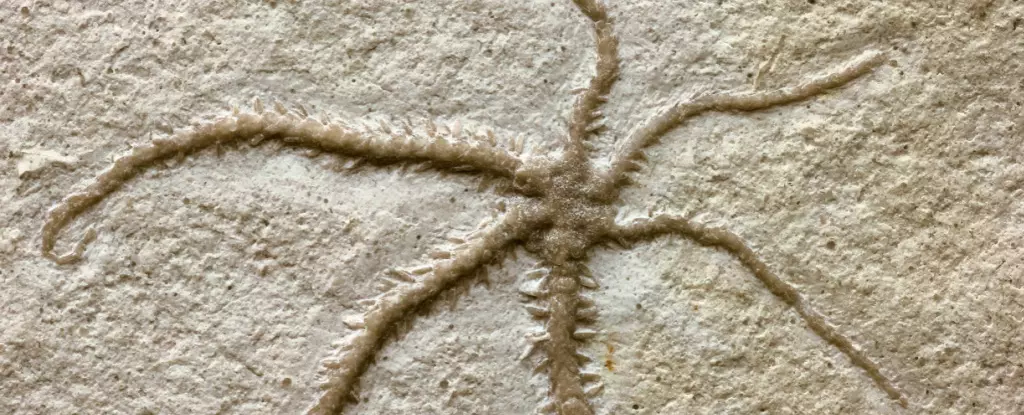The Earth’s fossil record serves as a portal into the ancient past, offering glimpses of organisms that once roamed the planet. Recently, scientists in Germany made a remarkable discovery – a six-armed brittle star fossil that captures a moment of regeneration frozen in time. Unearthed from a limestone deposit in southern Germany, this exceptional specimen sheds light on a new species of brittle star, Ophiactis hex, that displays a unique form of asexual reproduction.
Modern-day brittle stars and some starfish are known to reproduce through a process called fissiparity, where the organism splits in half, regenerates missing parts, and gives rise to two genetically identical offspring. This method, also known as clonal fragmentation, is a fascinating biological phenomenon that has long puzzled researchers. The Ophiactis hex fossil, estimated to be 155 million years old, provides crucial evidence that clonal fragmentation in echinoderms dates back to ancient times and is intricately linked to their six-fold symmetry.
Ben Thuy, a paleontologist at the Luxembourg National Museum of Natural History, and his team have delved into the evolutionary implications of the Ophiactis hex fossil. They emphasize that while the biology of clonal fragmentation is relatively well understood, the geological history and evolutionary origins of this phenomenon remain enigmatic. This new discovery challenges our perceptions of asexual reproduction in star-shaped echinoderms and prompts a reevaluation of their evolutionary trajectory.
The fossilized brittle star, with its distinctive six arms and preserved hook-shaped arm spines, offers a glimpse into the ancient past of these enigmatic creatures. The researchers speculate that the symmetry of the six arms in Ophiactis hex may have facilitated the process of clonal fragmentation, allowing for a more even split during reproduction. This newfound insight into the relationship between body symmetry and asexual reproduction raises intriguing questions about the adaptive significance of such biological strategies.
While the discovery of the Ophiactis hex fossil is a significant milestone in paleontological research, it also highlights the scarcity of similar specimens in the fossil record. With only one known example of a six-armed brittle star displaying regenerative properties, the researchers acknowledge the challenges of reconstructing the evolutionary history of this species. Despite the limitations of a single fossil specimen, the implications of this discovery reverberate throughout the scientific community, sparking new avenues of inquiry into the ancient origins of asexual reproduction in brittle stars.
The fossil record continues to yield remarkable insights into the evolutionary history of life on Earth. The discovery of the six-armed brittle star fossil, Ophiactis hex, stands as a testament to the intricate processes of regeneration and reproduction that have shaped the diversity of organisms over millions of years. As we unravel the mysteries of ancient life forms, we gain a deeper appreciation for the resilience and adaptability of living organisms in the face of environmental challenges and evolutionary pressures.


Leave a Reply